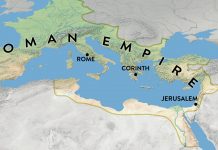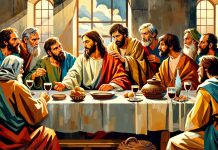Biblical interpretation is undoubtedly one of the greatest challenges for any reader of the Bible. What are the essential hermeneutical principles we need?
Confidence that this is God’s revealed word is not enough to understand God’s message. The Bible mentions occasions when people interested in studying it needed special guidance. Just as it is true that there are passages with simple language and messages that can be understood by the reader without anyone’s help, so it is equally true that there are complex passages that require special attention and suitable information for understanding.
How to understand a biblical text
Jesus’s cryptic messages can be considered to be those passages that require a greater degree of attention and guidance. These are part of the Gospels, a separate literary genre, along with other literary genres recorded in the Bible: the narrative genre, the sapiential genre, the poetic genre, the epistolary genre, the prophetic genre (classical and apocalyptic), and the parable. Jesus’s messages are generally recorded in the gospels. Therefore, I will focus on the principles of interpretation of this literary genre.
When interpreting the gospels, it is important to establish, if possible, the following: (1) the historical events in Jesus’s personal life; (2) the social and religious context in which Jesus lived and served; (3) the purpose of the authors of the specific gospel; and (4) the literary context in which a certain statement of Jesus’s appears.
Speaking of the personal life of Jesus, one must study its course paying careful attention both to the chronological order and to the fact that some sequences can be repeated in different circumstances. The message of the Sermon on the Mount can be repeated in other contexts and geographical areas. It is also necessary to carefully analyse all of Jesus’s interactions with different people so that we can understand the context of the various statements.
For example, the method used by Jesus to heal the man who was born blind, recounted in chapter 9 of the Gospel of John, is different from the method used for healing the blind man in Bethsaida. In the case of the man who was born blind, Jesus uses a mixture of dust and saliva as an ointment. This does not necessarily imply that this “ointment” had therapeutic qualities.
In the Jewish conception, however, only the firstborn had the ability to heal with his saliva. Jesus makes this gesture to prove that He has the status of the firstborn. Jesus takes the blind man from Bethsaida by the hand and out of the village. This gesture meant his release from his dependence on people.
The social and religious context in which Jesus lived is different from the one in which we live today. In the time of Jesus, we are dealing with a Jewish context, in which we encounter several sects—the Pharisees, the Sadducees, the scholars, the Herodians, the Essenes—and their peculiarities provide important information for the correct interpretation of Biblical texts.
One must also take into account that we are two millennia away from Jesus’s time and that there is an important cultural difference between our world and the Biblical world (West vs East).
Even a contemporary of the gospels had to take this difference into account if they wanted to better understand Christ’s message. For instance, when the message about Jesus reached the diaspora, issues specific to Judaism became irrelevant: “Pray that your flight will not take place in winter or on the Sabbath”. In the Gospel of Matthew this saying appears to include the Sabbath, but in the Gospel of Mark it only refers to winter. Why? Because in Jerusalem the gates of the city were closed on the Sabbath. A possible crisis made it impossible to escape on the Sabbath because the gates were closed. Since Mark addressed the gospel to those in the diaspora, closing the gates of Jerusalem on the Sabbath was of no relevance to them (they could flee at any time).
Regarding the ancient context, the reader can use extra-Biblical materials, which address cultural, social, political, and religious aspects of that time.[1] Thus, one can discover information about the social strata (free man, slave,[2] slave master,[3] soldier, worker, teacher), religious life (religions in a city, ritual, clergy, believers, religious sects[4]), the cultural experience (customs, traditions [5]), and geography[6] of Jesus’s time on Earth.
Understanding the purpose of the gospels is especially important for correctly understanding them and how the authors structured them. The original recipients of the four gospels were different, as evidenced by their different styles. It is true that we are dealing with many similarities in the case of Matthew, Mark, and Luke (also called synoptic gospels[7]), but these can be explained by observing the purpose and recipients of the texts[8]. The Gospel of John is different in style, because its purpose is not primarily to provide a chronology of Jesus’s life, but to try to prove that the Logos, the Word, who was the Creator God, became incarnate in the person of Jesus Christ.
Interpretation stages
Speaking of the actual interpretation of a text, here are several steps to consider:
Prayer. We cannot study and understand the Word of God correctly without the help of the God of the Word.
Becoming acquainted with the text. This involves reading the text that must be interpreted carefully, so that it becomes part of the mind’s concerns. Understanding a text can take longer.
Choosing the best textual variant. If we were to limit ourselves only to the text of the New Testament, as researchers, we still have several textual variants at our disposal, which offer a wider range of solutions. Since we no longer have access to autographs[9], the aim is to get as close as possible to them. This approach requires knowledge of ancient languages (Hebrew, Aramaic, Greek, Latin, Syriac, etc.), because this research does not stop at the Bible, but extends to the writings of the church fathers, who used the Biblical texts in abundance.
The translation of the text. Those who have access to Biblical languages can translate the text themselves, having also the advantage of specialized software programs. Everyone else can consult different translations of the Scriptures to access the available textual variants. In this way one can opt for a textual variant that meets the requirements of a thorough textual review.
Context research. The following steps are important: (a) The cultural-historical context: the dating of the book, its author, the purpose for which it was written, the recipients, the problems that led to the writing; (b)Tthe literary context, broad and immediate: this aspect is extremely important. The literary context is the foundation of interpretation. Extrapolating a saying and interpreting it out of context can generate meanings that were not in the recipient’s mind, damaging the Word.[10]
The analysis of the text. At this stage it is necessary to follow (a) the different structures (if any) of the text,[11] (b) literary forms,[12] (c) analysis of larger passages, if applicable; and (d) sentences and phrases. Analysing them can provide an idea of the semantic nuances and the direction of the discourse.[13]
Theological analysis. Here we are dealing with the analysis of the theology of a text in the context of the whole book or of Scripture. The principle of, “Scripture is its own interpreter” is important at this stage, as there is consistency among Biblical prophets.[14]
Applying the text. Contextualization is important because this step makes the Bible relevant to us: (a) personalizing the text; and (b) searching for all the Biblical passages that talk about the issue we are studying, so that we have an overview of the Biblical conception on a certain topic.
Studying the Bible, even if it can be difficult at times, is a beautiful and rewarding journey. We should not expect a full understanding from the very beginning. The more complicated passages of Scripture, such as Jesus’s difficult sayings, are explained by simpler ones. Getting familiar with the language of the Bible can help the reader to understand the statements that are more difficult to comprehend. The Word of God is alive and working. It has the power not only to answer personal questions and dilemmas, but also to transform the reader’s life.
Marius Mitrache believes that in order to understand the Bible, it is necessary to go through certain important stages. The explanation of a passage is the foundation on which its application is built regardless of the era in which the reader lives.




















